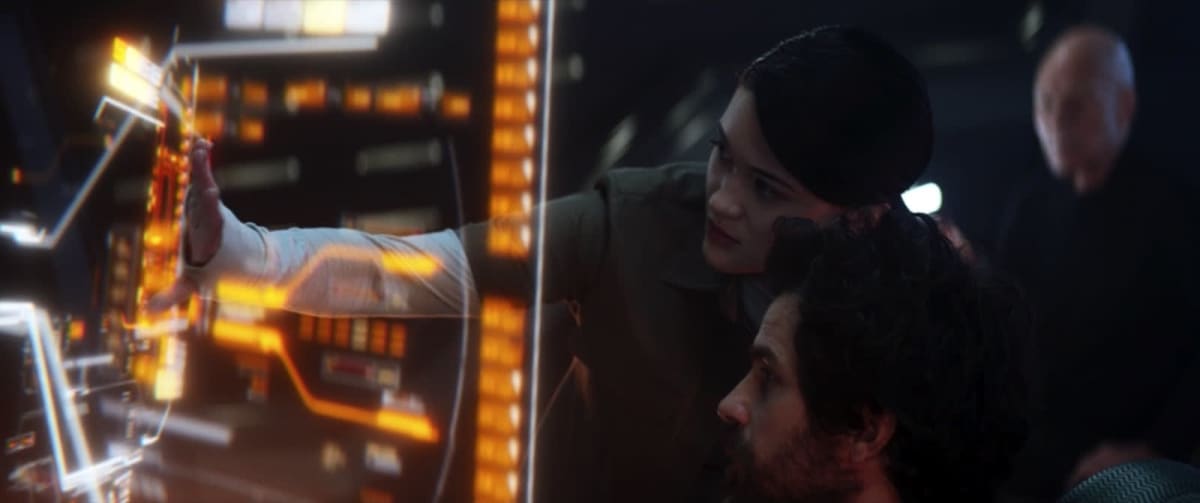'Picard' finally shows us how Star Trek’s technology evolves - 4 minutes read
 Over seven seasons various TNG episodes continued to explore what the holodeck could do. Deep Space Nine (DS9) even gave us a recurring holographic character, lounge singer Vic Fontaine. But it was Voyager that made a sentient hologram part of the main cast, and spent the next seven years exploring the concept of having a hologram as a full-time crew member — from his mobility limitations (he was confined to the ship until he obtained a mobile emitter in season three), his relations with his fellow officers and eventually, his legal rights as a synthetic being.
Over seven seasons various TNG episodes continued to explore what the holodeck could do. Deep Space Nine (DS9) even gave us a recurring holographic character, lounge singer Vic Fontaine. But it was Voyager that made a sentient hologram part of the main cast, and spent the next seven years exploring the concept of having a hologram as a full-time crew member — from his mobility limitations (he was confined to the ship until he obtained a mobile emitter in season three), his relations with his fellow officers and eventually, his legal rights as a synthetic being.There were plenty of questions left to explore; plenty of ideas that could be iterated on. What happened to the Doctor when he got back to the Federation? Would he fight for the rights of fellow holograms? Would holograms continue to be used on ships? Would the Doctor's mobile emitter technology become widespread? All of these questions would not, and could not, be answered because after the release of Nemesis in 2003, the universe stopped moving forward. Star Trek: Enterprise was set 200 years earlier in the 22nd century, and Star Trek: Discovery put us back in the 23rd. The NX-01 Enterprise barely had transporters, much less sentient holographic lifeforms. (And the three Abrams films were not only set in the past, but in a different reality with its own tech!)
The choice to place new series in the past not only kept them from continuing technological threads introduced in other shows, but it kept them from introducing new ones lest they break the logic of the shared timeline. Discovery's spore drive was a pretty unique piece of technology, allowing travel across vast distances in a matter of seconds — way beyond warp capabilities — but ultimately it had to be kept secret with all records of it erased, since such technology didn't line up with what we'd seen in TOS, TNG and DS9. It would have made the entire premise of Voyager, that of a ship stranded 70,000 light years away from home, completely moot.
Now, with Star Trek: Picard, we're back in the 24th century. And we can now start following up on these technological threads again. If Voyager asked what happens when you make a holographic being a full-time officer, Picard asks what happens if the entire crew of its ship, La Sirena, was made up of holograms. (Hilarity, apparently.) But Picard is more a continuation of TNG than Voyager, and so its raison d'être is one of its parent series' continuing plot threads: sentient android life.
In the pilot of TNG we met Data, where we were immediately told he was a sentient android. In fact, he was the only sentient android, as his creator, Noonian Soong, never published the details of his work. Many of Data's plots revolved around his desire to be more human and his role as the sole Soong-type android in existence. There were minor points of character development — Data developing an interest in Sherlock Holmes stories or getting a cat that he wrote poems about — but there were also huge leaps forward, like that time he built himself a daughter. Over the course of the show Data would build strong friendships with his fellow crew and eventually develop the ability to feel (thanks to a chip which was first revealed in season four but not implanted in Data until the first film, Generations, four years later).
Data was killed in Nemesis and that was the end of it. Since the next two series were set in the past, where sentient androids didn't even exist yet, they couldn't address questions like, "Did anyone try to build more androids like Data? What happened to that scientist, Bruce Maddox, who was working on building one and wanted to take Data apart for research? What happened to the other Soong-type androids we met, B-4 and Lore?" The entire plotline was as dead as Data.
Source: Engadget
Powered by NewsAPI.org